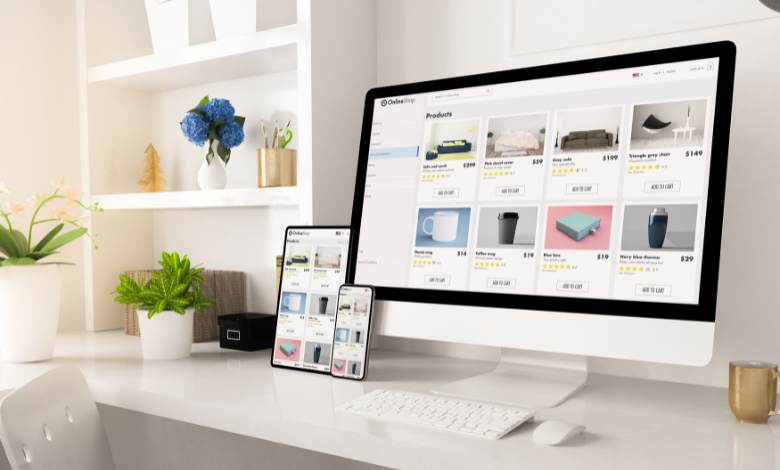Product listing pages can make or break your e-commerce success. They serve as the welcoming gateway to your online store, drawing in potential customers and transforming them into devoted patrons. However, keeping these pages optimized can be challenging. Don’t worry! Here are some fantastic strategies to enhance your product listing pages (PLP) effortlessly. So, let’s dive right in!

Table of Content
- Why Optimize Product Listing Pages?
- How Data-Driven Technology Powers Up PLPs
- Real-Life Example: PartsLogic’s Success Story
- Final Thoughts: Embrace Automation for Optimal PLPs
Why Optimize Product Listing Pages?
Optimizing product listing pages is crucial for several reasons:
- It enhances the user experience by providing clear, concise, and relevant information that helps customers make informed purchasing decisions. Optimized pages enhance load speed, improve navigation, and showcase product information clearly, leading to lower bounce rates and higher conversion rates.
- Optimized listings improve search engine visibility. By incorporating relevant keywords, meta descriptions, and high-quality images, these pages rank higher in search results, attracting more organic traffic.
- Optimized product pages often include customer reviews and ratings, which build trust and credibility, further encouraging purchases.
Optimizing product listing pages is a strategic approach that boosts user satisfaction and business profitability by driving traffic, increasing engagement, and ultimately enhancing sales performance.
Understanding the Basics
To enhance your product listing pages, you must first grasp their responsibilities. A product listing page showcases multiple products in a specific category. Think of it as a gallery where each item has a chance to shine.
Key Elements of Product Listing Pages
Every successful PLP includes a few key elements:
- Product Images: High-quality images grab attention.
- Product Titles: Clear and concise titles help customers find what they want.
- Pricing Information: Transparent pricing builds trust.
- Product Descriptions: Detailed descriptions can answer potential questions.
Automation Tools to Optimize PLPs
In today’s fast-paced world, manual optimization can be time-consuming. That’s where automation tools come in handy. Tools like site search tools can help you streamline the optimization process. They automatically update images, descriptions, and even pricing, ensuring your PLPs are always up to date.
How Data-Driven Technology Powers Up PLPs
Data-driven technology serves as the powerhouse behind successful PLP optimization. Imagine having a personal assistant who precisely understands each customer’s preferences. This advanced technology gathers and scrutinizes extensive data, uncovering patterns and trends that are not immediately apparent. Here’s how it works:
Understanding Customer Behavior
To optimize your product listing pages, you first need to understand how your customers behave on your site. Data analytics tools can track every click, scroll, and hover, giving you a detailed map of customer interactions. Are they drawn to bright, bold images? Do they spend more time reading detailed descriptions or scanning through bullet points? Knowing this helps you tailor your PLPs to match customer preferences.
Personalized Recommendations
Personalization has become an essential strategy in modern e-commerce. You can tailor product fitment search displays by leveraging customer data to match each visitor’s preferences and behaviors. This approach can greatly enhance conversion rates. For example, if a customer often purchases running shoes, your product listing page (PLP) should prominently feature the newest models in that category, catering to their interests.
Dynamic Content Adjustment
Dynamic content adjustment means that the content on your PLPs changes based on real-time data. If a product is trending, it moves to a more prominent position. If a customer has viewed a product multiple times without buying, you can offer a discount or show testimonials to nudge them toward a purchase.
Real-Life Example: PartsLogic’s Success Story
Let me tell you a story about PartsLogic. They were struggling with outdated product listings, which affected their sales. After integrating automation tools, they experienced a 30% conversion boost in just one month. Their secret? A combination of high-quality images, clear product titles, and detailed descriptions – all updated automatically.
Optimizing Images Automatically
Images play a crucial role in e-commerce. However, manually updating them can be a hassle. Automation tools can help batch upload high-resolution images, ensuring your products look their best. You can also utilize tools to automatically adjust the size and optimize images, ensuring they load more quickly.
Crafting Compelling Product Titles
Product titles are like signposts guiding your customers. They should be clear, concise, and informative. Automation tools can help you generate SEO-friendly titles based on your product descriptions. This strategy not only boosts visibility but also significantly enhances the user experience.
Dynamic Pricing Updates
Pricing is a sensitive issue for many customers. Keeping your prices competitive can give you an edge over your rivals. Automation tools can track competitor prices and adjust yours accordingly, ensuring you always offer the best deals.
Enhancing Product Descriptions
Product descriptions are your chance to shine. They should be informative and engaging. Automation tools can help you generate detailed descriptions based on your product specifications. This approach not only saves you valuable time but also guarantees uniformity across your Product Listing Pages (PLPs).
Leveraging Customer Reviews
Customer reviews are gold mines of information. They provide social proof and build trust. Automation tools can help you display reviews prominently on your PLPs, boosting credibility and encouraging more sales.
Using Search Engine Optimization (SEO)
SEO is essential for driving traffic to your PLPs. Use keywords like “product listing page,” “PLP pages,” “e-commerce listing,” “product listing website,” “PLP e-commerce,” and “e-commerce product listing” throughout your descriptions and titles. Automation tools are invaluable for pinpointing optimal keywords and incorporating them effortlessly into your content.
Optimizing for Mobile Users
As more people turn to their phones for shopping, optimizing for mobile devices is essential. Ensure your PLPs are mobile-friendly by using a responsive design. Automation tools can streamline the creation of mobile-optimized versions of your pages, ensuring a smooth and consistent user experience across all devices.
Implementing Structured Data
Enhancing your Product Listing Pages (PLPs) with structured data allows search engines to grasp their content more effectively. By implementing schema markup, you can supply extra details about your products. Automation tools can assist in generating and applying this markup, thereby boosting your search engine rankings.
Testing and Tweaking
Optimization is a continuous journey. Consistently experiment with various components of your Product Listing Pages (PLPs) to determine what yields the best results. Implement A/B testing to evaluate and contrast different page versions, allowing for data-driven decisions to enhance performance. Automation tools can help you set up and analyze these tests, making it easier to identify the most effective strategies.
Monitoring Performance
Keep an eye on your PLP performance using analytics tools. Monitor key metrics such as website traffic, conversion rates, and bounce rates. Utilize automation tools to produce comprehensive reports, enabling you to make informed, data-driven decisions.
Final Thoughts: Embrace Automation for Optimal PLPs
With the right approach, optimizing your product listing pages can be straightforward and effective. By using the right tools and strategies, you can effortlessly streamline this process and ensure your PLPs are of the highest quality. Implement these tips, and you’ll notice increased traffic, improved conversion rates, and more satisfied customers.
Think of a well-optimized PLP as a well-organized store; it draws customers in, keeps them engaged, and motivates them to purchase. Start optimizing your product listing pages with Partslogic today and experience a substantial increase in your sales!





